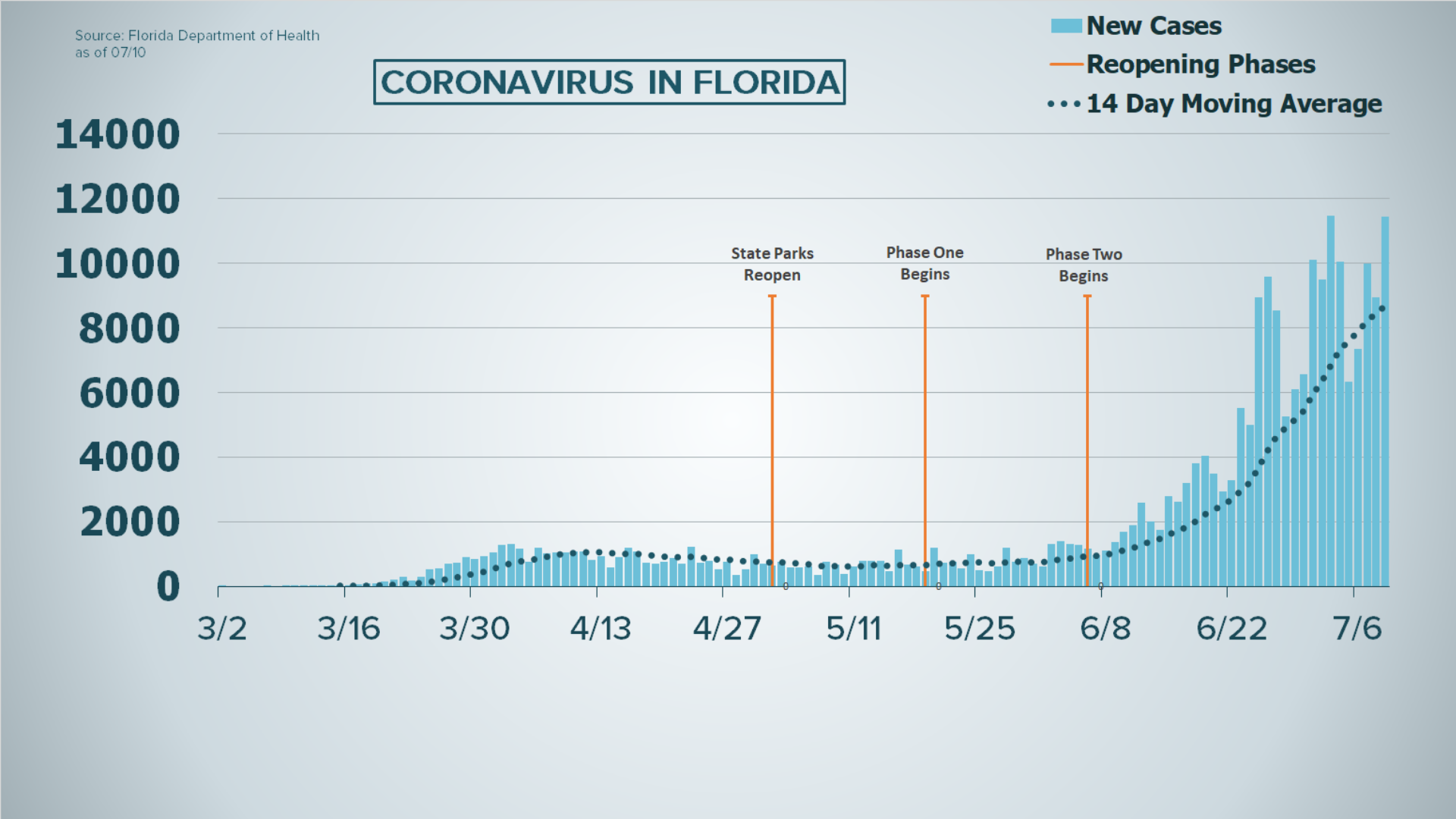Following Thursday's record high reports of new COVID-19-related deaths and percent of people testing positive statewide, Florida on Friday reported another 11,433 new confirmed cases.
The latest data, which was aggregated on July 9, shows the second-highest single-day increase in newly-reported cases following the 11,458 cases we learned of on July 4.
The state has yet to report a day in July where the number of newly-confirmed cases was fewer than 6,000.
The Florida Department of Health also said another 93 Florida residents had died from coronavirus, as of July 9. There was a change in the state's data, however. The state report previously showed 102 non-Florida residents had died during the pandemic. That number has since been revised to 101.
A total of 4,102 residents have died during the pandemic, the Florida Department of Health said.

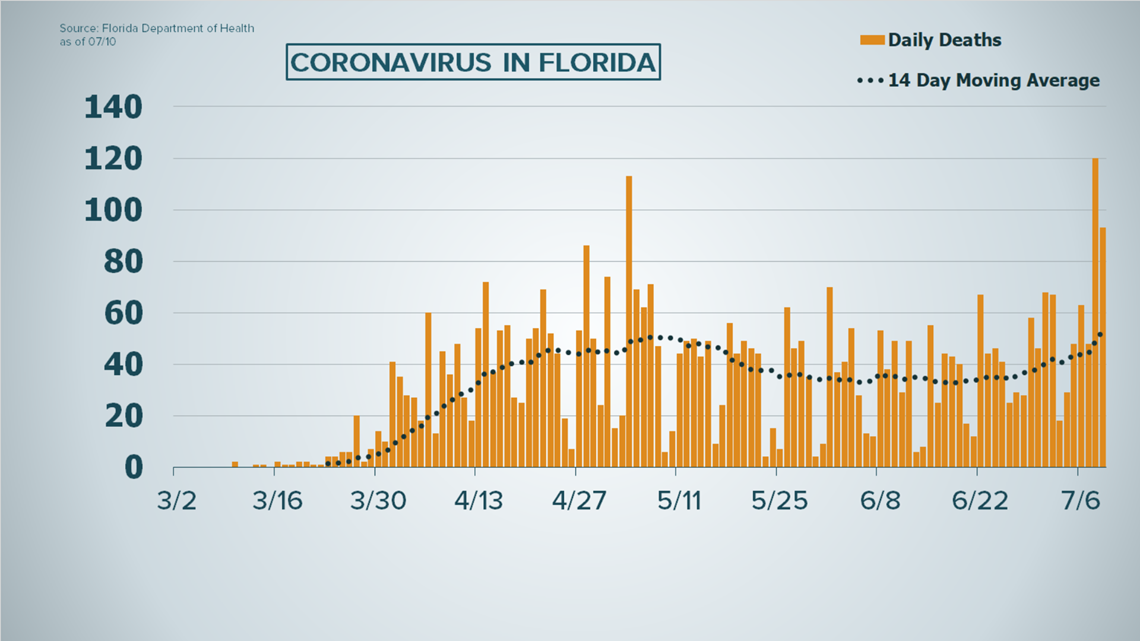
Since March, a total of 244,151 positive coronavirus cases have been confirmed in Florida. The state passed the 200,000 cases mark last weekend after hitting the 100,000 mark just two weeks ago.
Florida has now had more confirmed cases than Germany and France, according to data from Johns Hopkins University & Medicine. Germany has 83.02 million residents, which is more than 3.86 times the population of Florida. France has nearly 67 million residents -- more than three times Florida's population.
Friday's report showed 95,348 test results were turned in on July 9, with 12.75 percent of those being positive. That number is now the highest for test results turned in. The previous record was more than 85,000 on July 3.

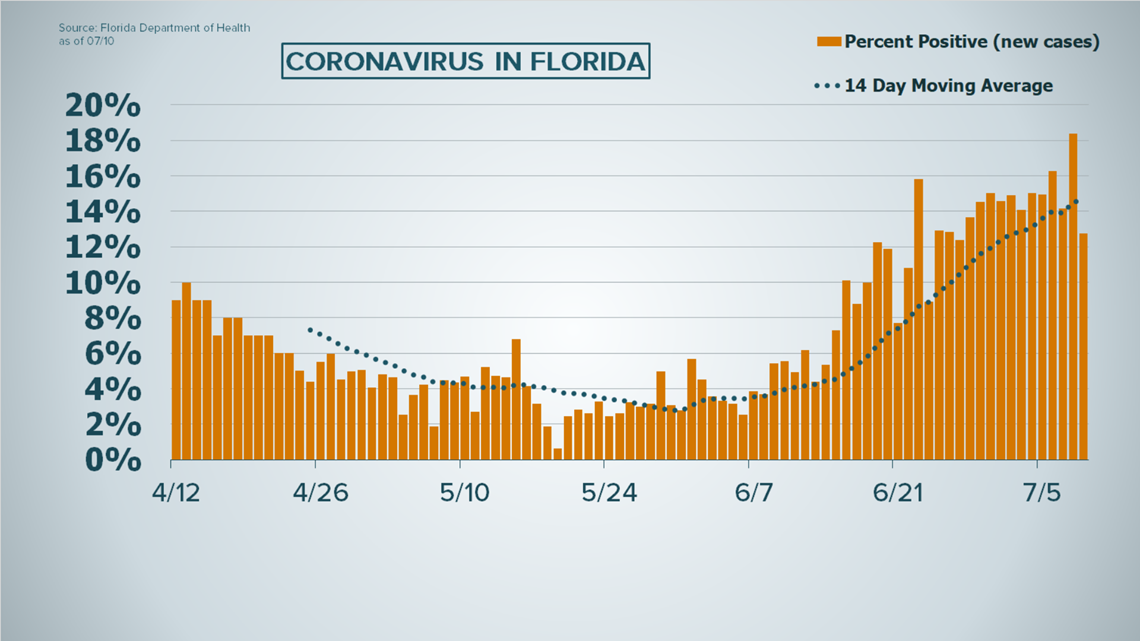
The median age of Florida residents testing positive is beginning to climb again from the low-to-mid 30s to 40 on July 9. The number of total hospitalizations since the pandemic began has increased by 435, according to the July 9 data.
Here's a breakdown of the new coronavirus cases reported to the state by day:
- June 21: 2,926
- June 22: 3,286
- June 23: 5,508
- June 24: 5,004
- June 25: 8,942
- June 26: 9,585
- June 27: 8,530
- June 28: 5,266
- June 29: 6,093
- June 30: 6,563
- July 1: 10,109
- July 2: 9,488
- July 3: 11,458
- July 4: 10,059
- July 5: 6,336
- July 6: 7,347
- July 7: 9,989
- July 8: 8,935
- July 9: 11,433

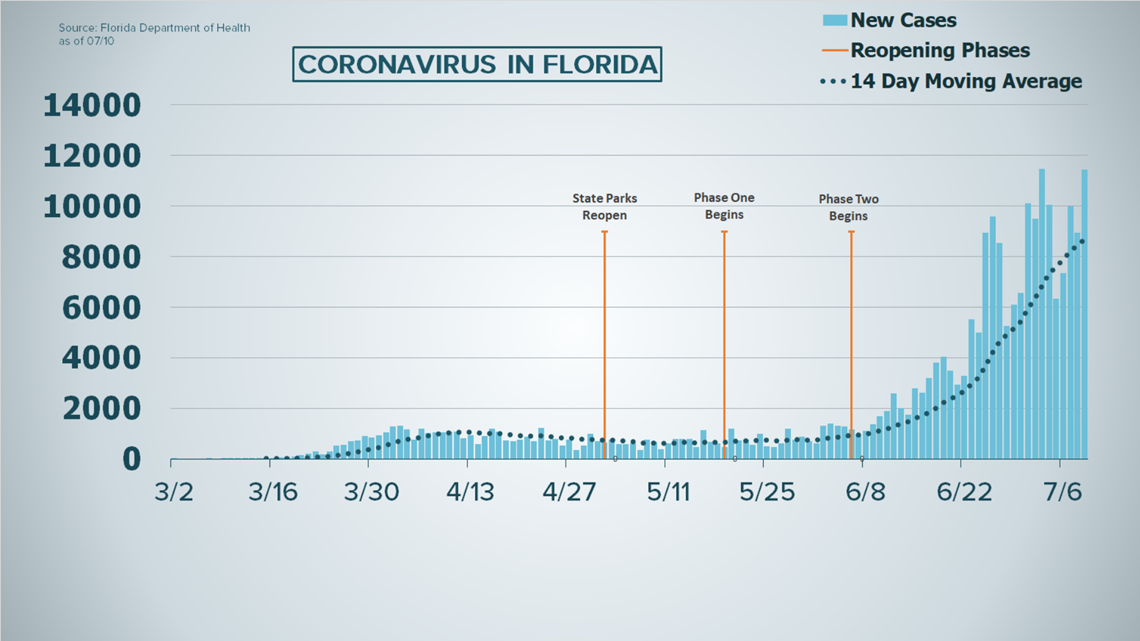
Why does the state's dashboard look different?
The state's dashboard for new COVID-19 cases looks a little different than ours, at least for daily new cases. That's because the state is only tracking Florida residents, not total cases in Florida, on its dashboard. It tracks the latter in its daily report.
And, the chart on the state's website is regularly revised to say a case happened on one day instead of another.
For consistency, we've been tracking the total number of cases reported each day. Those totals don't change, so it's the most consistent way to measure trends, even if the state moves data around on its dashboard.
Here's a direct link to the state's data to examine yourself.

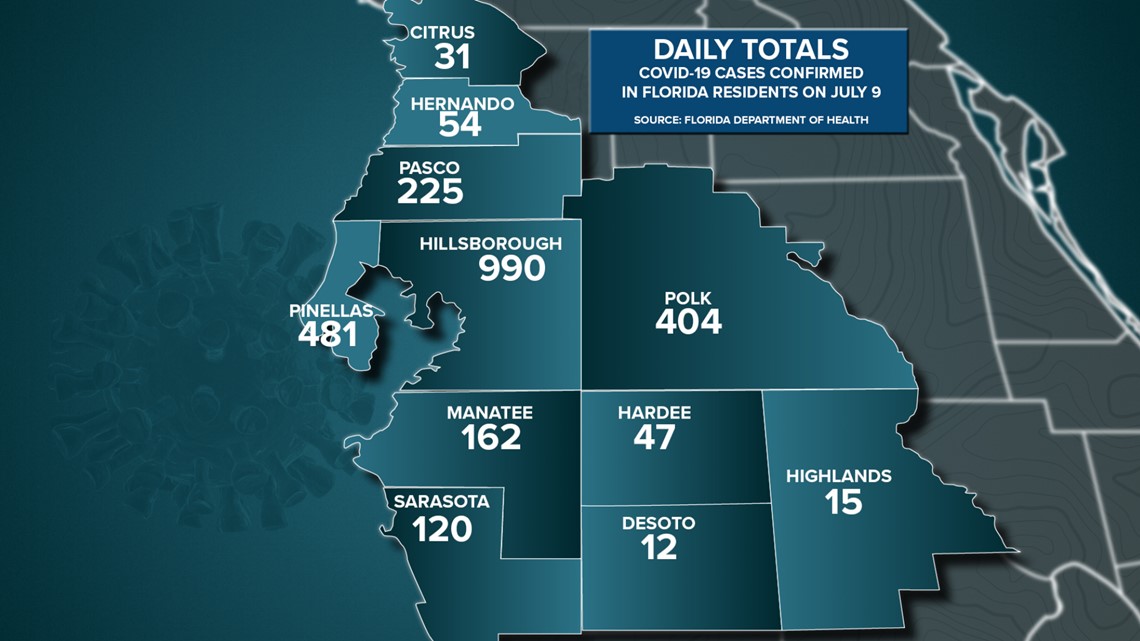
Hospitalizations
It's hard to track just how many people are hospitalized with COVID-19 at any given point in Florida. Since the pandemic began four months ago, the state said a total of 17,167 residents have been hospitalized as of Thursday morning.
But, that number includes anyone who was hospitalized at any point during their illness. It does not show the number of people currently in the hospital for coronavirus.
The Agency for Healthcare Administration (AHCA) does update hospital bed and ICU availability by county. And, some counties have taken steps to show that information, including Pinellas County, which offers a daily look at coronavirus hospitalizations in the area.
Most counties don't say exactly how many of their beds are being occupied by coronavirus patients at any given moment, but we can use the total ICU bed occupancy as an indicator of how full hospitals are right now.
As of Friday morning, 14.41 percent of Florida's 5,981 adult ICU beds were available. When it comes to the state's 622 pediatric ICU beds, 36.98 percent were available.
All that is according to the Agency for Health Care Administration's data.
For the Tampa Bay area, based on the data below, 138 of the area's 1,282 adult ICU beds were open as of Friday morning -- about 10.8 percent.
Around the Tampa Bay area, here is the breakdown:
Citrus: 5 of 40 adult ICU beds available
DeSoto: 0 of 8 adult ICU beds available
Hardee: No ICU data
Hernando: 6 of 52 adult ICU beds available
Highlands: 5 of 28 adult ICU beds available
Hillsborough: 32 of 390 adult ICU beds available
Manatee: 6 of 66 adult ICU beds available
Pasco: 2 of 124 adult ICU beds available
Pinellas: 43 of 297 adult ICU beds available
Polk: 12 of 163 adult ICU beds available
Sarasota: 27 of 114 adult ICU beds available
**Editor's Note: The state doesn't offer ICU availability for Hardee County. But, for some perspective: as of Sunday morning, two of the county's 25 hospital beds were available for an 8 percent availability.
- Florida reports 120 more people died from COVID-19, adds 8,935 cases
- Pinellas County Schools releases reopening plan for upcoming school year
- Florida woman takes job as a dishwasher so she can see her husband in nursing home
- Polk County Publix workers test positive for coronavirus
- CDC Director Redfield sticking to school-opening guides Trump criticized
- 'We're the epicenter' | Epidemiologists say action to slow the spread of COVID-19 in Florida needs to be taken now
- Walt Disney World reopening: What to know before you go
►Stay In the Know! Sign up now for the Brightside Blend Newsletter

